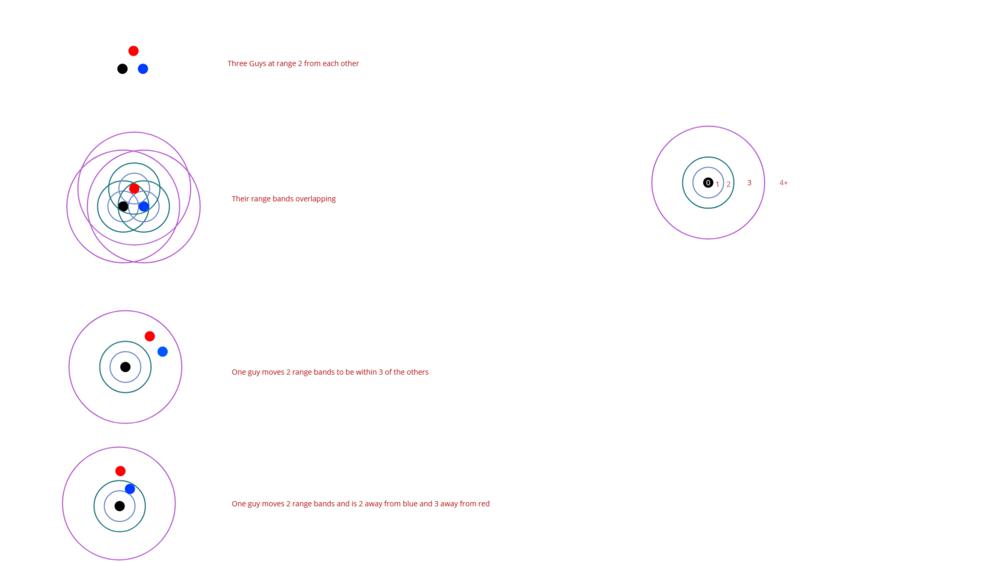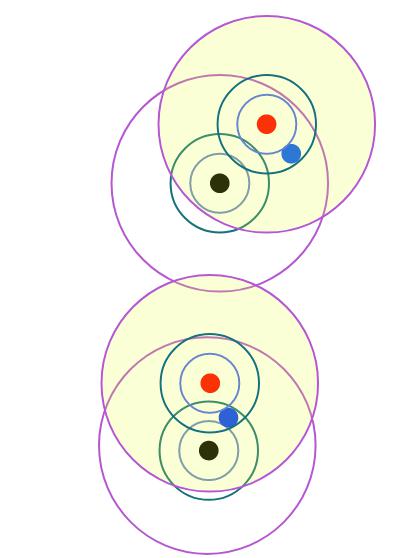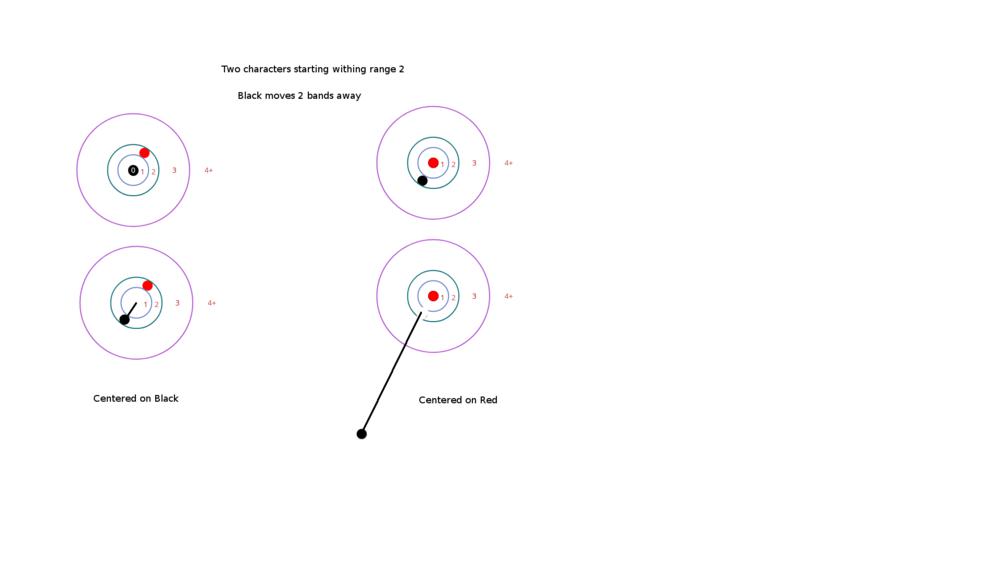Hi,
To say it simply, I don't get range bands.
Or more precisely, I don't get how to track them when there's more than one character.
Let's say you have three characters. A, B, and C.
Situation 1 :
They all start at range 2 of each others.
If A decides to move to 2 ranges away from B. Are they range 4 from C too?
Situation 2 :
A and B start at range 2 from each other and both are range 4 from C.
Can C get closer to A without getting closer to B? How do you track it?
Range bands are the only thing confusing me in those rules.


